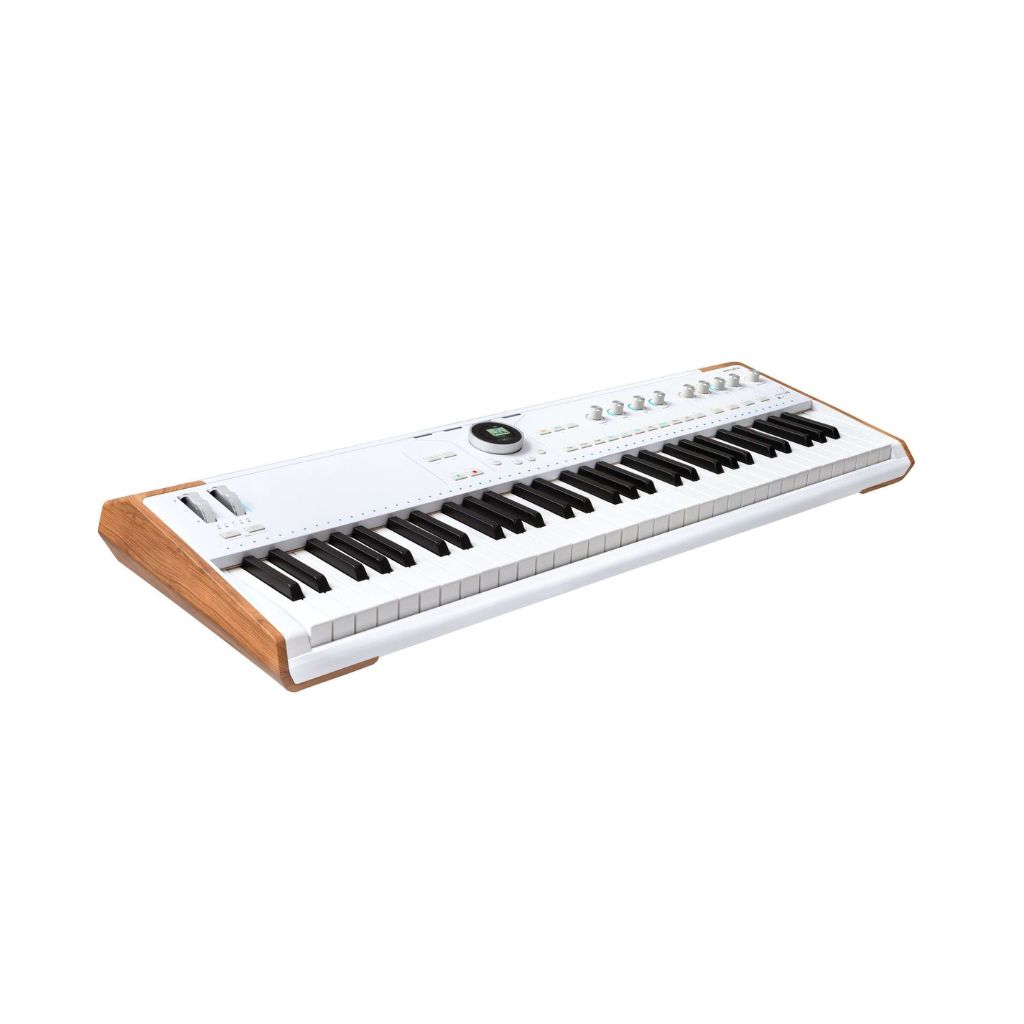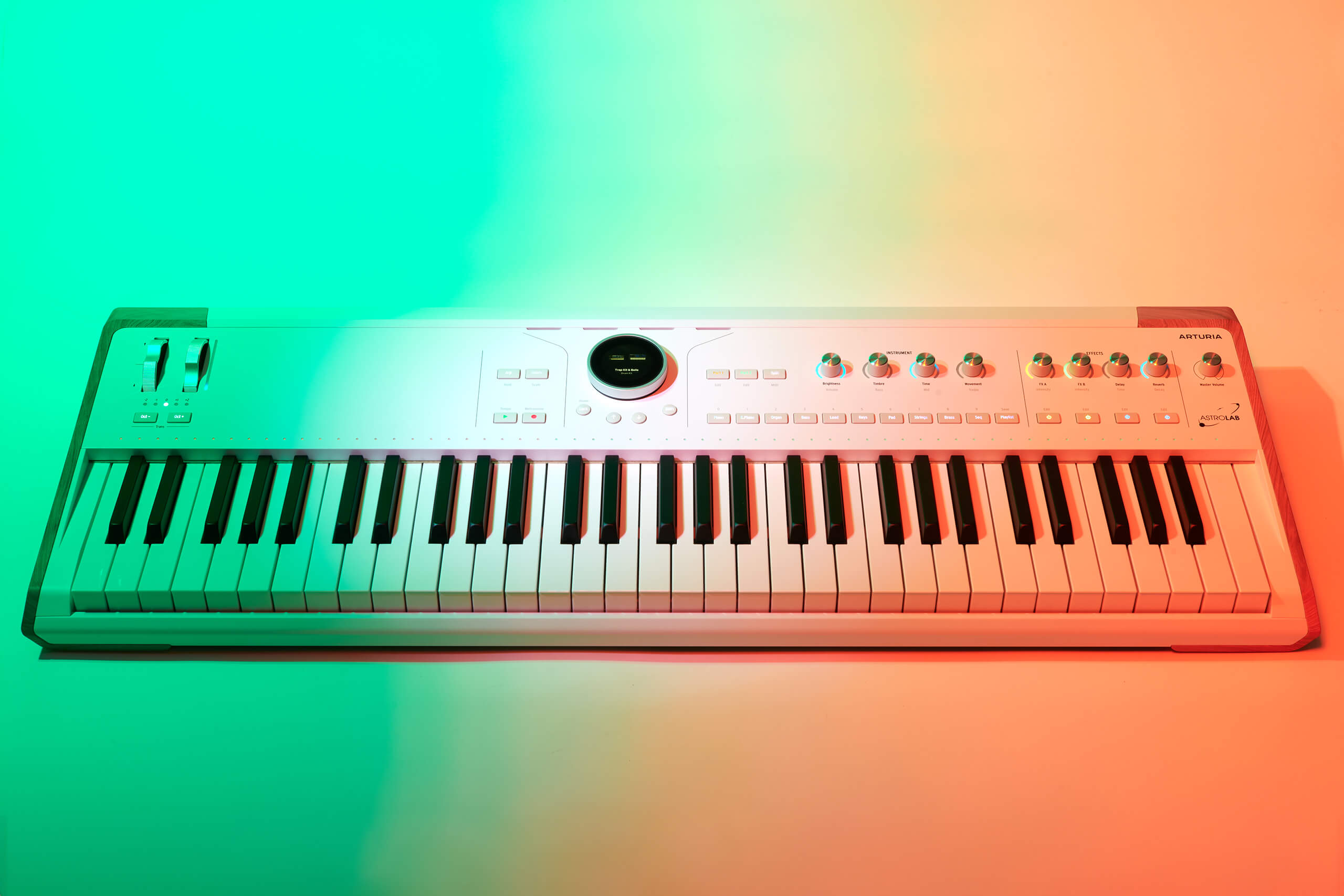
Arturia’s AstroLab: The story of an instrument ten years in the making
We sit down with Arturia to talk about the instrument that encapsulates the philosophy of a company
Image: Simon Vinall for MusicTech
It’s fitting that we find ourselves speaking with Arturia’s product manager, Pierre Pfister, on the eve of Arturia’s 25th birthday. Since its genesis, the French company has moved gracefully between musical software and hardware; from the Modular V released in 2003 and designed in collaboration with Robert Moog, to 2012’s MiniBrute, which marked the start of an enduring and fruitful relationship with the world of analogue.
Multitudes lie between those poles: 2014’s Step range of compact controllers provided an elegant interface between USB, DIN MIDI and CV connectivity, quickly finding a home in electronic setups the world over. 2018’s Pigments heralded the company’s first original software synth, and 2020 saw the launch of the titanic Polybrute, a polyphonic six-voice analogue powerhouse. Now, the company boasts Eurorack modules, plugin effects, audio interfaces and more, confidently rubbing shoulders with some of the biggest names in those industries.
READ MORE: AstroLab is one giant leap for Arturia — but will it really take off?
But the litany wouldn’t be complete without the V Collection, Arturia’s category-leading, ever-expanding suite of iconic software emulations. Version 10 boasts a whopping 39 instruments and the companion software, Analog Lab, packs thousands of presets designed by Arturia and dozens of artists. With parameters combined and streamlined for more intuitive performability and effects, Analog Lab combines a dauntingly vast array of instruments and presets that could easily overwhelm even the most confident users.
Now comes the AstroLab, touted by Arturia as a defining achievement in the company’s history.
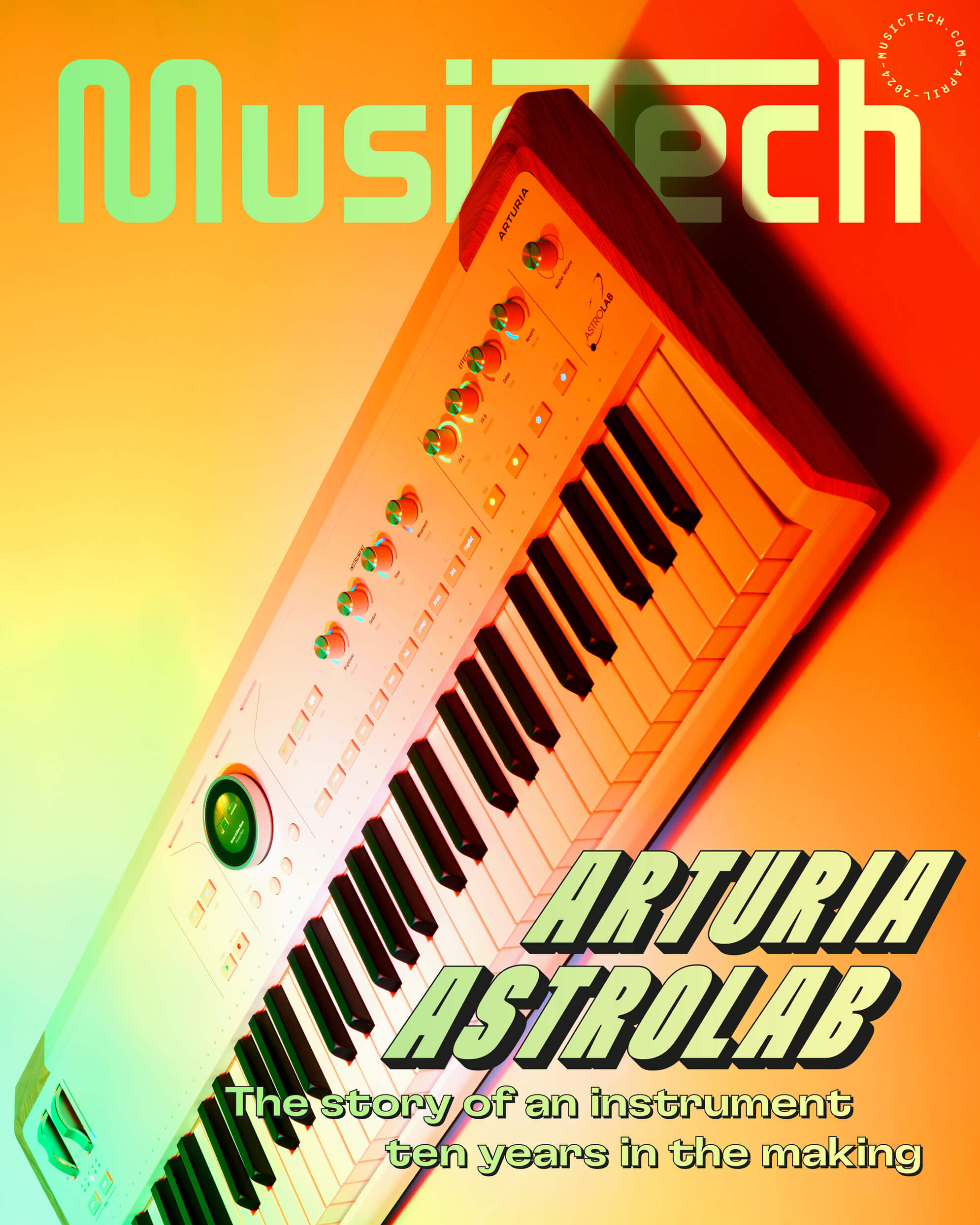
“It’s everything we’ve ever wanted to achieve,” describes co-founder Frédéric Brun of the AstroLab. And it’s easy to see why.
The AstroLab’s raison d’être is to take the environment of Analog Lab and all its intricacies— its instruments, presets, effects and playlists— and load them into a fully-fledged, bespoke hardware instrument fit for the rigours of any stage or studio. It’s heavy, rugged and oozes elegance; from its colour screen to its wooden side panels.
“So yeah, launching the AstroLab is a good way to mark our 25-year anniversary,” Pfister laughs, before reflecting, “It’s quite a long time now since we started. I joined the company ten years ago. I’ve seen quite an amazing change in the company in that ten years. We were around 25 people, I think. Now we have 150 people in the office in Grenoble, [France]. So it’s exploded, massively.
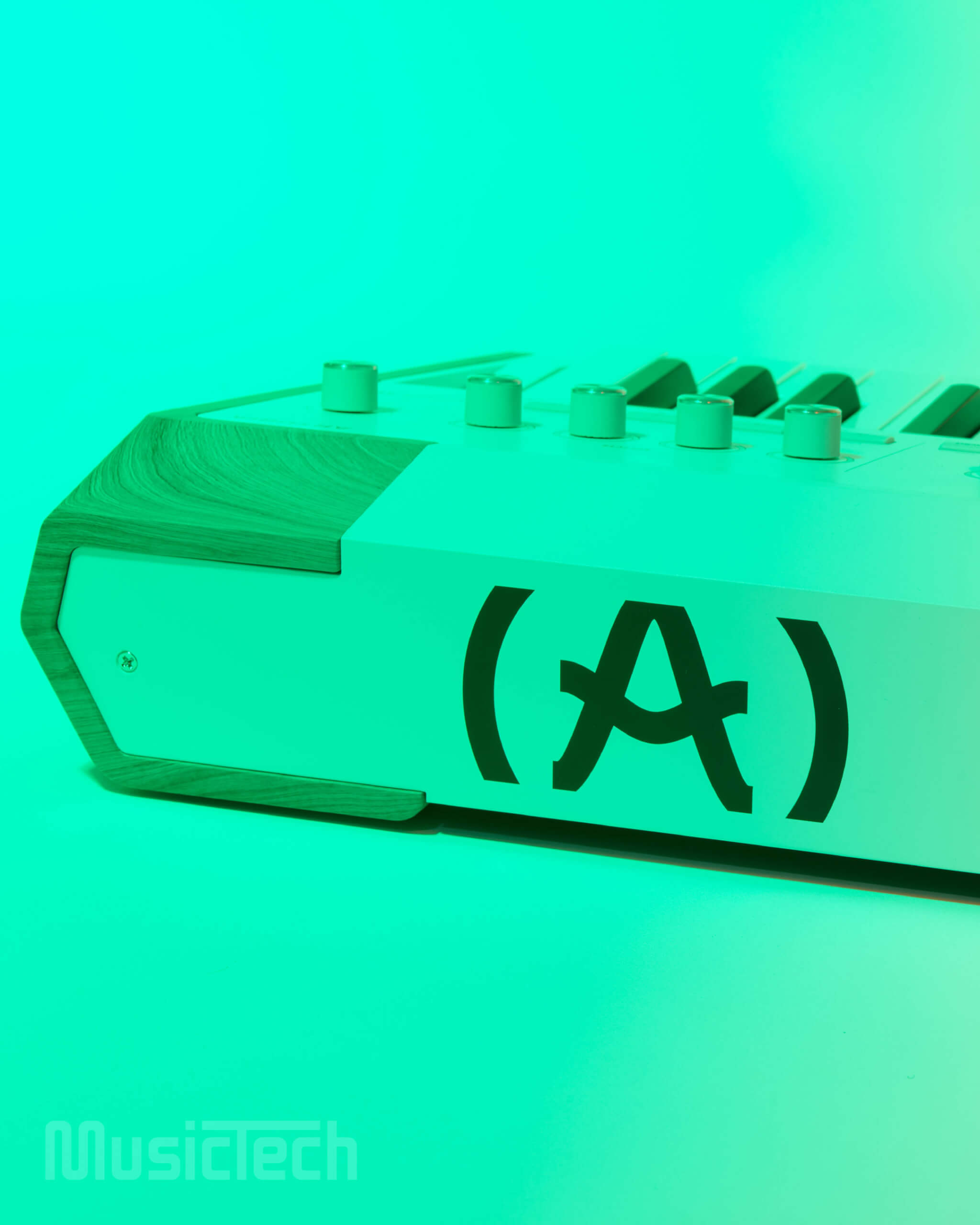
“When I arrived, most people didn’t know about Arturia. We were just seen as a very small software company making niche products. It felt like it was only for some people, in their home studio, making bleeps and bloops! Now, it feels like Arturia is used by everyone. Whether professionals or amateurs, everyone has a link to Arturia in some way. It’s crazy.
“That’s the biggest thing that comes to my mind when I think about the evolution of Arturia: now we are one of the major actors in the music industry. When I meet artists, it’s very exciting to see everyone using our products. It makes our job super important..”
Be it creating a Eurorack case that can clip onto a hardware synth or the ultra-portable hybrid MicroFreak, Arturia’s modus operandi has long been to bridge workflow gaps for music creators.
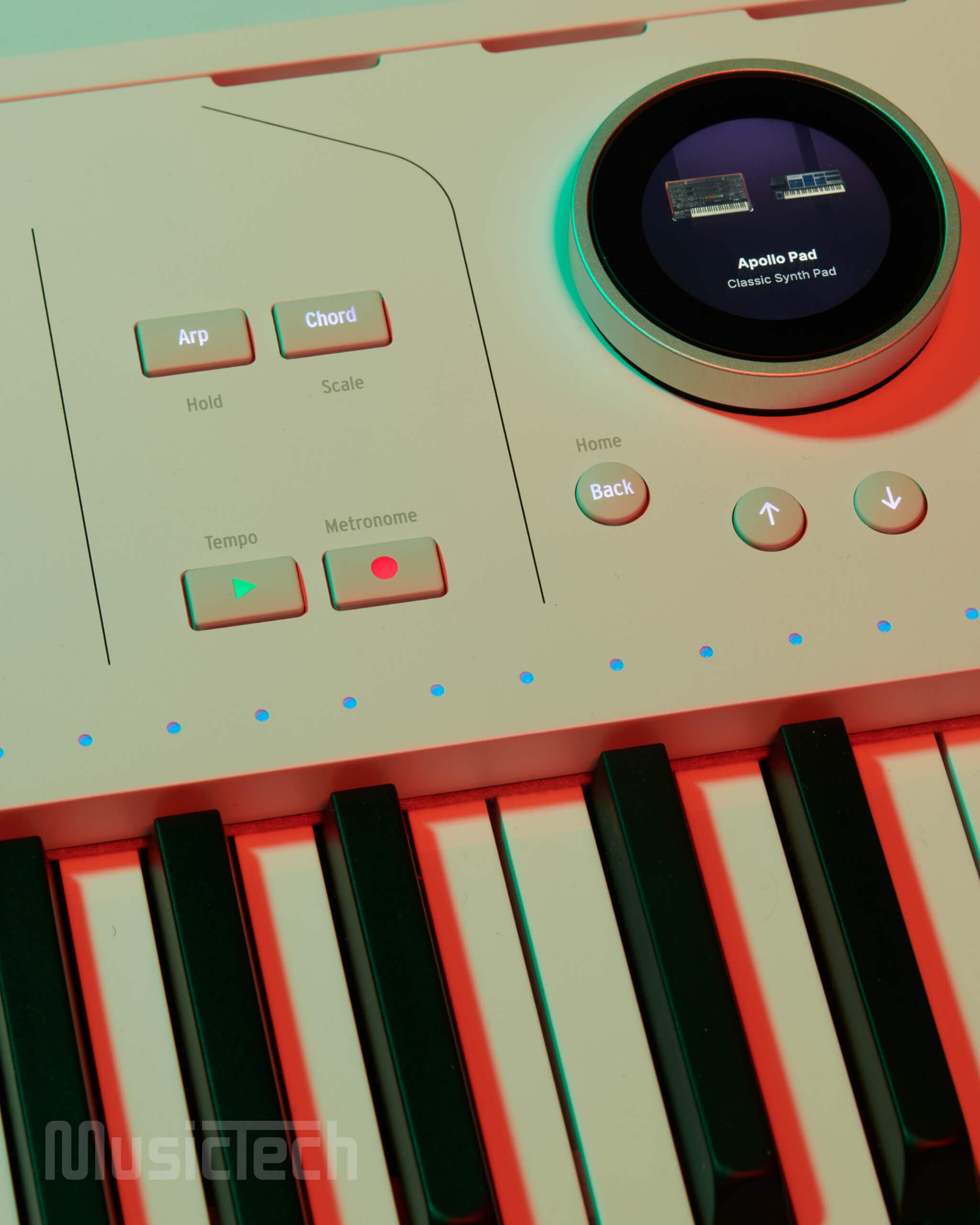
So why hold the AstroLab aloft as a singularly significant achievement? Well, for starters, it’s worth remembering that most famous developers’ stories start in hardware before moving into software. For Arturia, however, born at the technologically auspicious turn of the 21st century, things were different.
When the company’s classically-trained founders Frédéric Brun and Gilles Pommereuil met at the Grenoble Institute of Technology in the 1990s, their initial ambition was to create a software company. This they achieved: after launching in 1999, Arturia’s first product was Storm: an “end-to-end” production suite for the home computer that quickly found a faithful user base.
This flexing of the software muscle would meet one need, but in the process open up another. Users began to look for ways to bring their work in software back into the physical realm. “Musicians were still hesitant to take computers on stage at that time,” Pommereuil would later remember. “Many were coming to us, requesting hardware instruments that would embed our algorithms.”
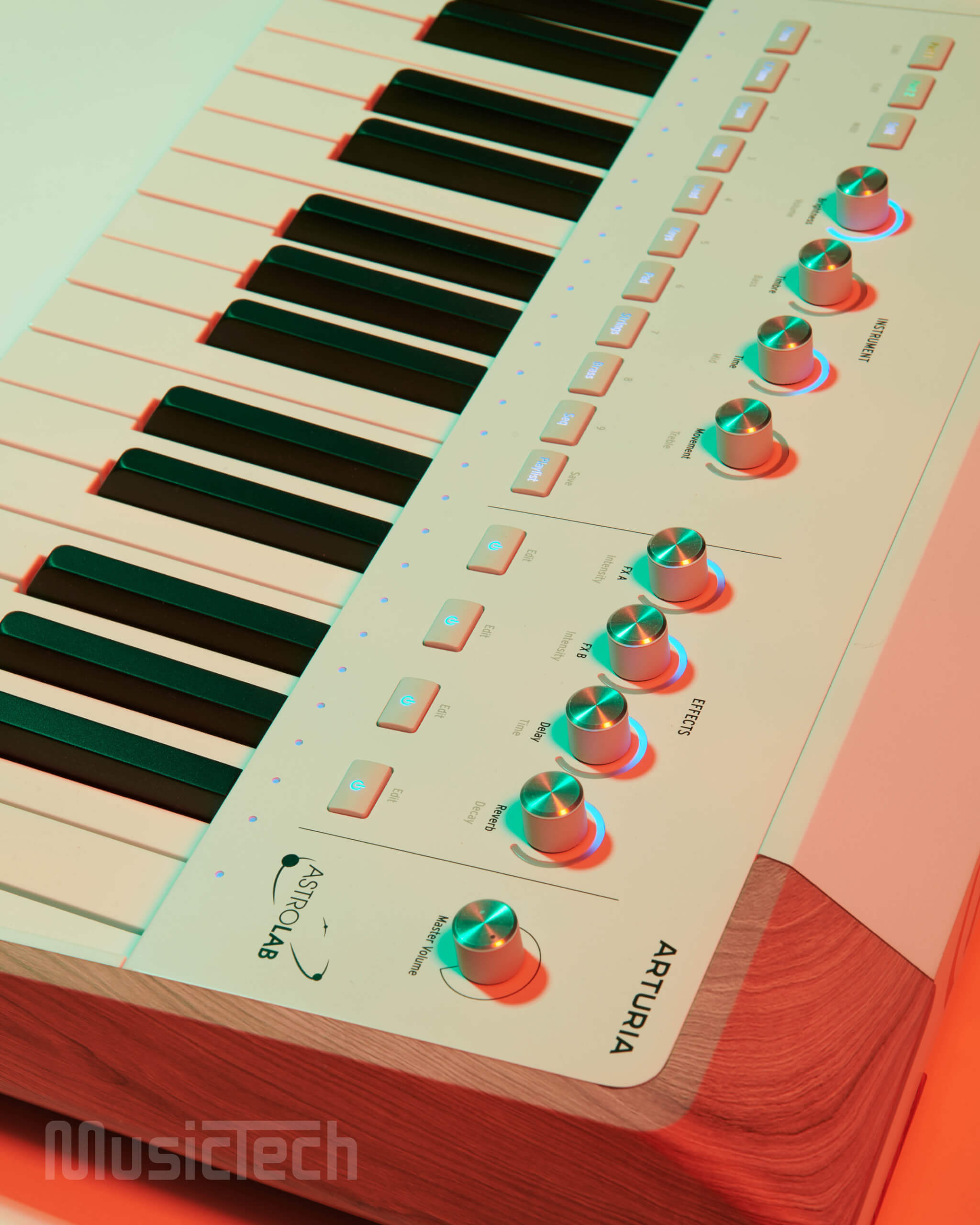
Enter Origin, Arturia’s first hardware instrument, unveiled in 2009. Replete with physical controls, the Origin sought to meet that need with a modular-style workflow, onboard effects and a now-retro-looking colour screen.
Exactly what happened next is something of a mystery. “Arturia is now in a strategic position between hardware and software,” the company declares in 2024, �“offering new ways to learn, create, and play, empowering musicians and allowing them to seamlessly move from one to the other. This balance was, and remains, a cornerstone of our strategy.” But has it always been?
Origin’s design was far from perfect, and it was expensive, but it was no flop by any means. Developments in the Origin’s vein were paused in favour of other projects— not dissimilar to how the iPad’s development was purportedly shelved to make way for the original iPhone amid a blooming smartphone market.
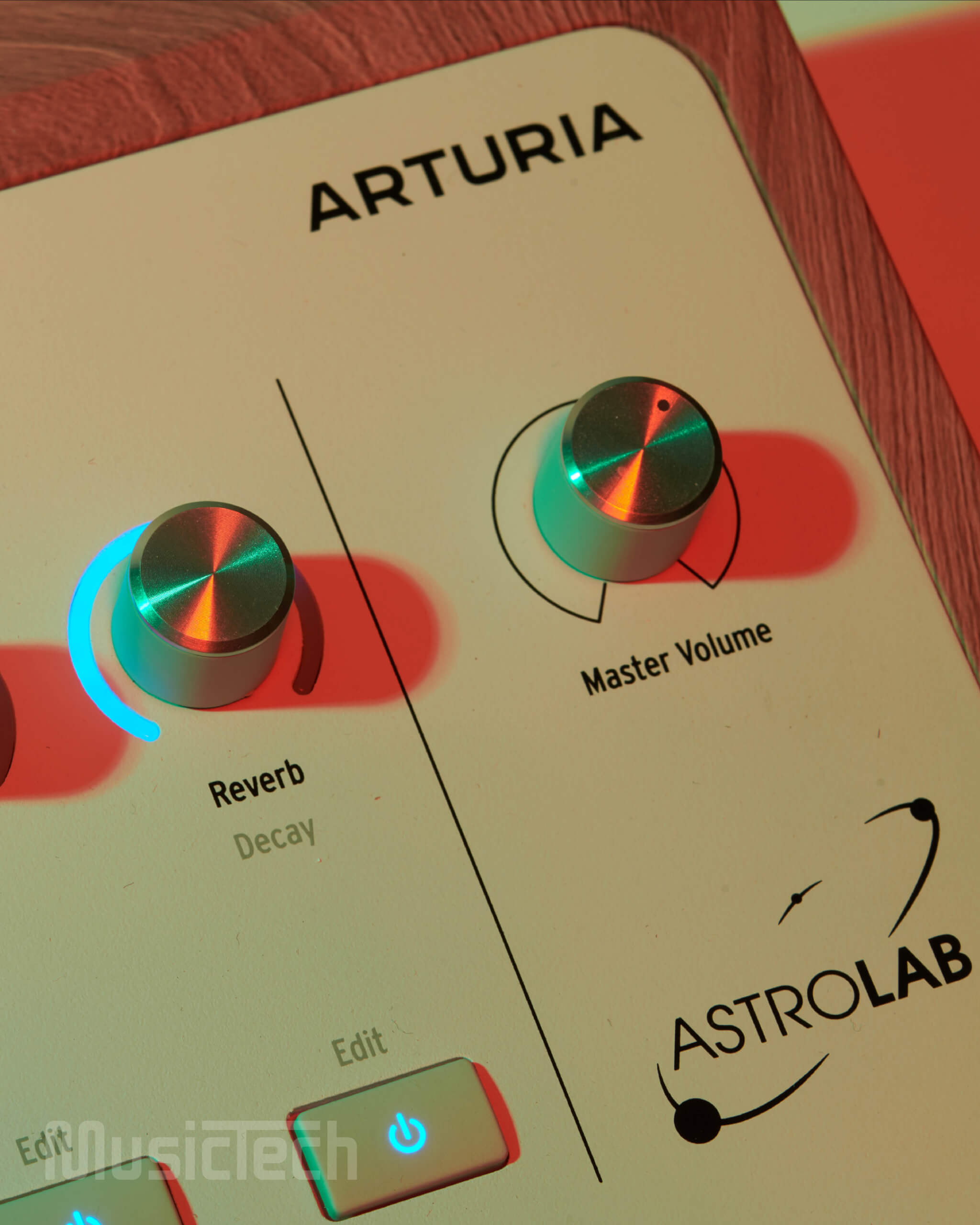
As it was, Arturia’s Analog Factory Experience launched in 2008 along with the company’s first MIDI keyboard, presaging the arrival of Analog Lab not long after and signalling a renewed focus on the DAW as a primary production tool for the modern producer.
It’s also no mystery that the beginning of the following decade heralded a massive resurgence in analogue synthesizers, a large portion of which ostensibly presented their own variations on the theme of ‘small’.
Arturia saw the opportunity from a distance; announcing the fully analogue, monophonic MiniBrute in January 2012. Korg’s MS-20 Mini and Moog’s Sub Phatty— comparative shoo-ins from already vaunted synth companies— would both follow in 2013, but Arturia’s designs kept apace. The MicroBrute arrived in 2014 and two years later, the DrumBrute. 2018’s MiniBrute 2 would double down on the commitment to analogue with a patch bay and the accompanying invitation to integrate it into a modular synth environment.
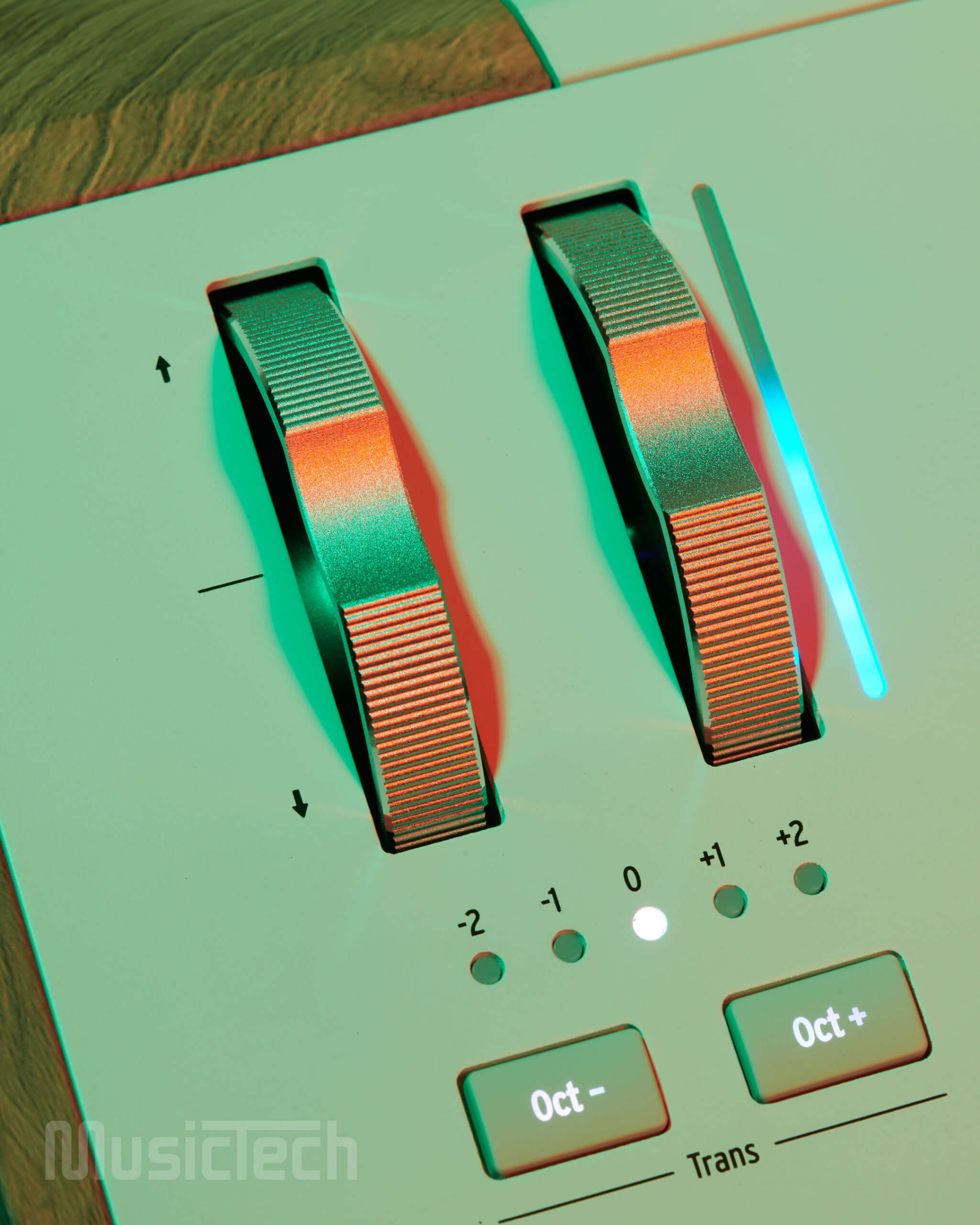
However, the success of these products was belied by Arturia’s continued preoccupation with the conundrum of how to reconcile the power of software with the joyous tactility and hands-on performability, which was all but fuelling the analogue renaissance.
“AstroLab is the conclusion of a long-standing dream that we’ve had forever at Arturia: to make the software and hardware integration seamless, and to be able to use all the sounds that we have in the V collection live,” explains Pfister. “The idea was already there when I arrived at Arturia. So we’ve been talking about doing it for more than 10 years!”
If it wasn’t clear already, the story of the AstroLab is, in many ways, the story of Arturia. But it’s also Pfister’s own story at the company. Joining as a software developer, many of his early years at the company were spent working on the V Collection before moving into the contiguous world of product design and eventually product management.
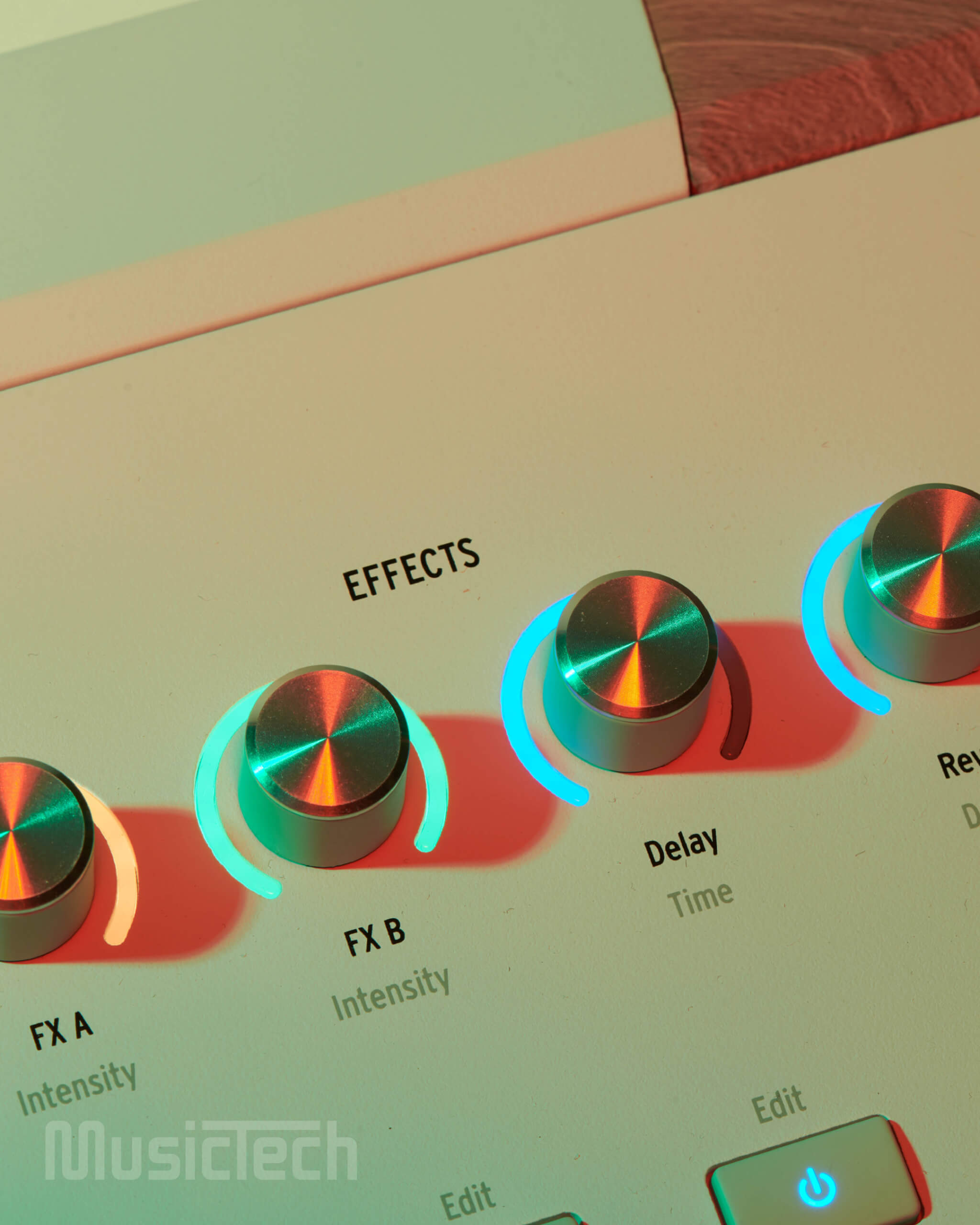
“All the work that we’ve done at Arturia on MIDI keyboards and the integration with Analog Lab is what has fuelled the idea of AstroLab,” he says. “So, it’s definitely one of the most important projects that we’ve worked on for years. It was already something that we’d tried to achieve with previous products.
“Origin was our first hardware instrument, embedding some of our software emulations. And AstroLab is the next step. It’s a dream we’ve had from the beginning. When Frédéric started to work on software emulations of vintage instruments, we quickly started to imagine how we could make that usable on hardware instruments as well.”
The phrase ‘the best of both worlds’ comes up more than once in our conversation. As a practitioner on the very boundary between those worlds, what exactly is the best of each, according to the Arturia manifesto? “Hardware is going to have the tactile feel, obviously,” considers Pfister, “but it’s also about having a limited and very purpose-oriented design. So you’ve got a set of features, and you don’t have to think about it. You’re limited to what the hardware is telling you that you can do.
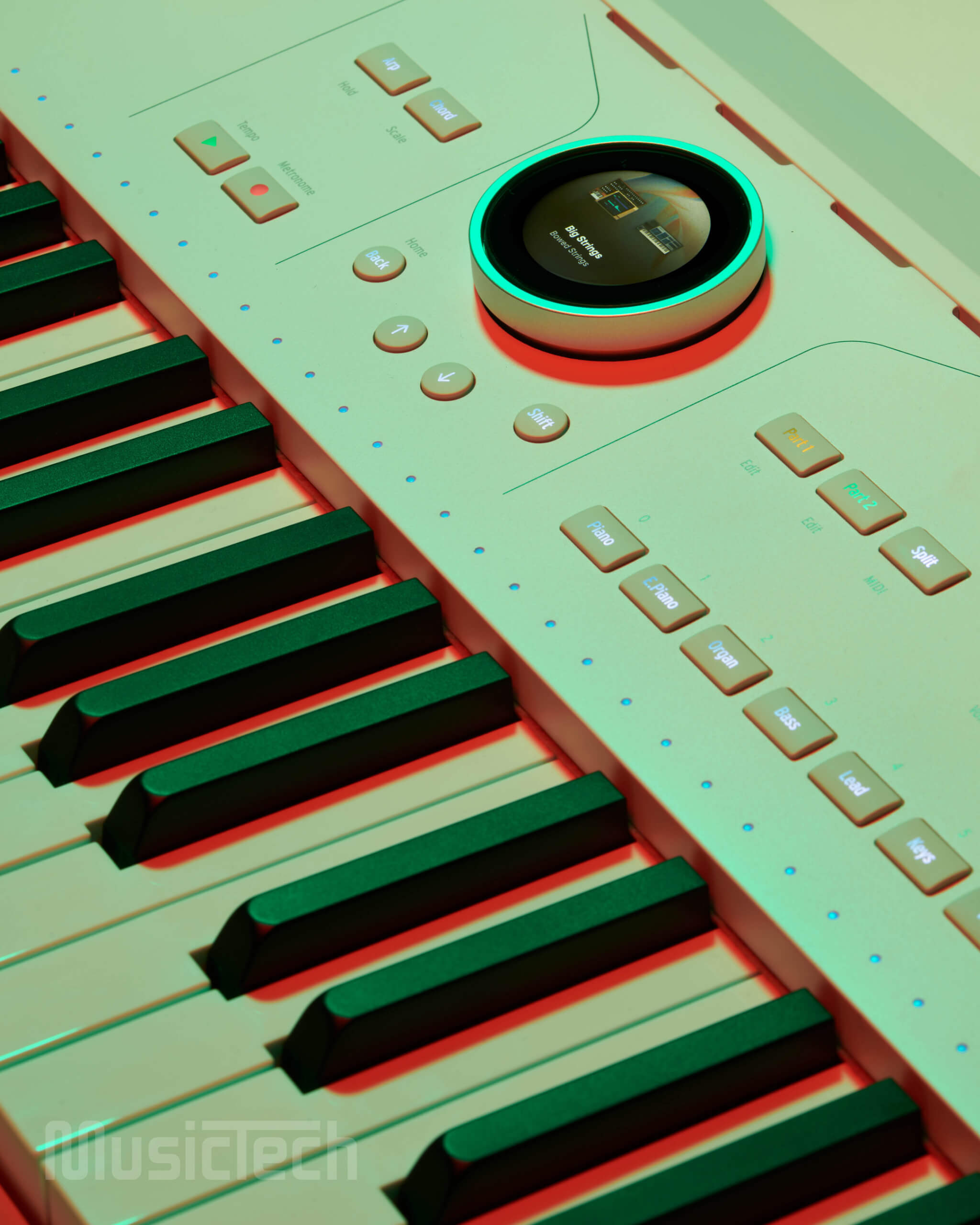
“On software, you can do pretty much anything. And, if you want to add some more functionality, you just add a screen. So it’s great to have some limitations on hardware; to immediately be able to understand what you can do with it. But on software, you have the opposite. You have unlimited potential for creativity because you can do whatever you want.”
It follows that the AstroLab pulls few punches when it comes to those hardware limitations, leaning into the workflow introduced by Analog Lab with an astonishingly sparse control panel that could capably handle twice its bill of controls.
“With the AstroLab, it’s really about refining things to the smallest common denominator. Since you have so many different instruments [to choose from], with so many controls on each, it takes a lot of time to learn every instrument and to learn the differences between all of them. So those Macros, that we’ve worked on for years now with Analog Lab, prove to be very simple to understand and very powerful, even though it feels limiting at first.
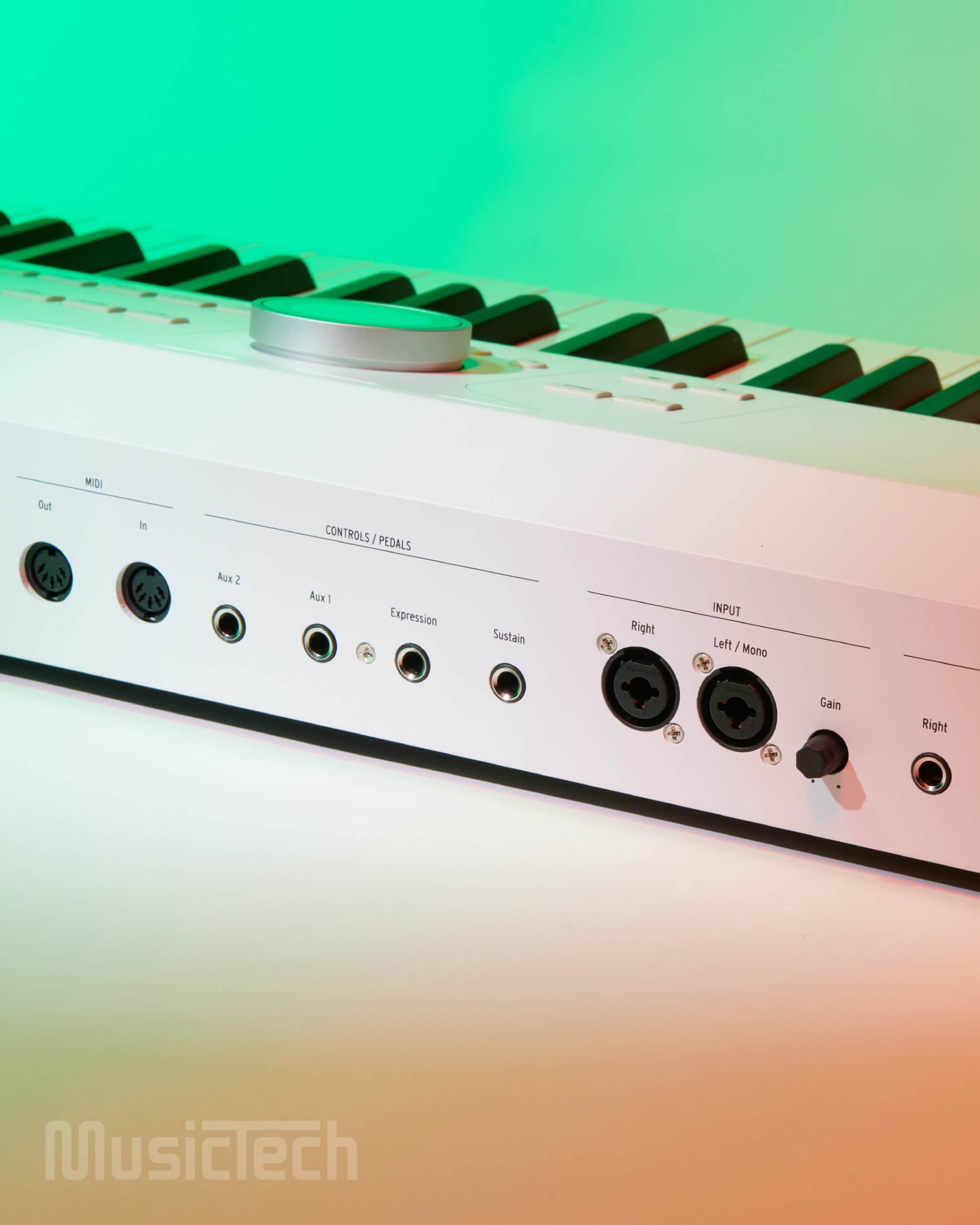
“But once you’ve focused on finding a sound and tweaking the macros, it makes your music production workflow very fast. You don’t have to think about it, and you know exactly what you can do with a sound. It’s the end of a process where we saw how people are using Analog Lab with our MIDI controllers. We saw what’s actually used by people, and we saw how many people are making music today with those four macros and those four effects. And we felt like we didn’t want to add more controls just for the sake of it. We wanted to keep a synth that was super simple to use, even by people who don’t know anything about synthesis.”
It’s almost as if Arturia’s mission is as much to do with education and accessibility as it has to do with providing tools for seasoned professionals, we offer. “It’s democratising,” agrees Pfister. “Like, there’s so much complexity that you can have in hardware and with synthesisers in general, but we wanted to hide it as much as possible on this instrument and focus on performance, on finding inspiration.
“The first step needs to be as easy as possible— we need people to understand the benefits very quickly. And when they get interested in the instruments, then we can provide them with all the history, all the specifics about each of the instruments, and they can dive into the collection and understand everything about how the instruments work. But the first step needs to be very easy to understand: how they sound, and how they can interact with them. So that’s why we wanted to make a product that’s very simple at first sight, that everybody can understand. And then, if you want to go more in-depth, you can open the collection on a computer and change anything that you want.”
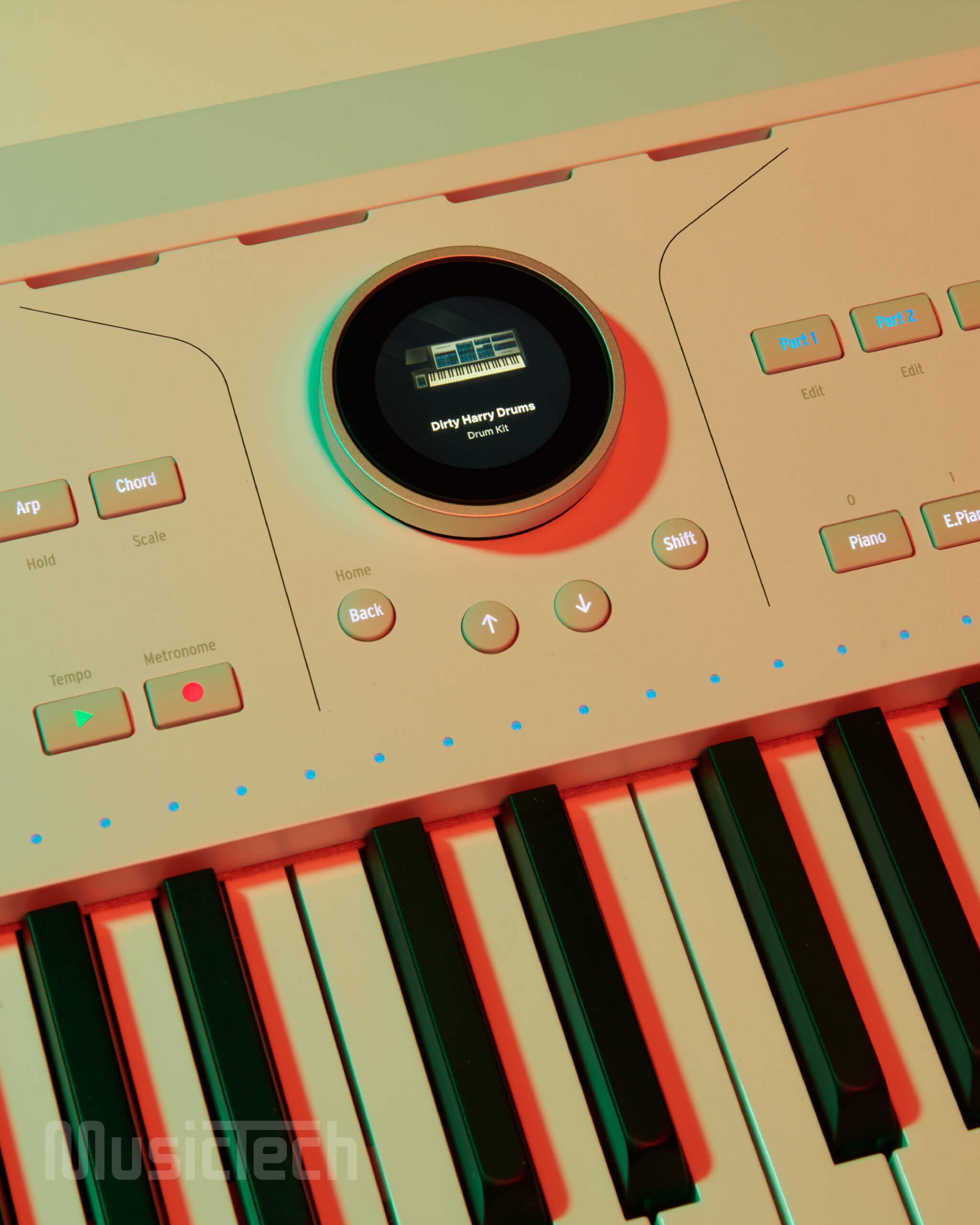
The AstroLab, then, is every bit a fitting token for Arturia’s two-and-a-half-decade milestone. As Pfister talks, it’s clear that into this instrument the company has poured its history, its philosophy— and, needless to say, its technology. The AstroLab has been a decade in the making, but it promises a new chapter for Arturia that may well provide a blueprint for the decade to come, too.
“It’s the end of a very long path,” reflects Pfister. “Although, for us, it’s not the end; it’s also just the beginning! Because now we have the technology. And we can make pretty much anything based on that. It’s about putting all the pieces together, small blocks in very different areas, and combining everything in a single ecosystem that provides everything that we’ve worked on so far. It’s going to take some time, but I’m really hoping to see more and more people using our instruments on stage in the next couple of years. There’s no clear limitation on what we can do. It’s gonna be very exciting.”
